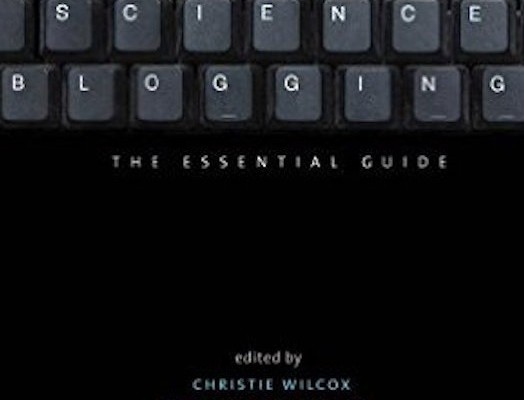The greatest pleasure I got from blogging was surprise. I would delve into strange corners of biology—a wasp that turns a cockroach into a zombie in which it can lay its eggs, for example. And I could see that people really did like to read about such stuff—and share it with their friends. The analytics for my blog showed me that I had readers from all over the world. I could see how other bloggers linked approvingly to the zombie post. Eventually the wasp ended up as a villain in a video game. A band posted a video on YouTube in which the members sang about the wasp’s attack as a metaphor for a romance gone especially bad. I could see the unpredictable ways in which the things I wrote spread through the maze of culture.
Blogging also let me jump right into the biggest science news stories of the day. In 2005, a judge in Pennsylvania was hearing a case brought by parents complaining that creationism—in its latest form, “intelligent design”—was being slipped into their local school. Judge John Jones delivered a devastating rejection of intelligent design and his decision was posted online. I grabbed a copy and read through it, blogging as I read. As I updated my post, readers were having their own discussion in the comment thread, making collective sense of this historic moment.
I sometimes responded to creationists on my own blog. Traditional publications didn’t see such responses as part of their mission. I disagreed, and used my blog to explain why creationist claims were wrong. By the time I had finished explaining how scientists know that the world is not just six thousand years old, I had explained geochronology—real science.
For the first few years of my experiments with blogging, some of my more distinguished colleagues in science journalism were baffled that I was “wasting” so much of my professional time. I was frustrated sometimes trying to explain why I enjoyed it so much. I couldn’t get them to see the possibilities that blogging—both the software and the cultural practice—opened up for science writing. They joked about how I was going to end up living in the basement of my mother’s house, blogging in my pajamas.
There’s a hostility laced into such jokes. Many journalists saw themselves as professional gatekeepers, who used careful judgment to decide what kinds of science should become part of the public record, and to decide how their stories should be told. Now anyone could launch a blog and make a mess of things.
Professional journalists didn’t just view bloggers as degrading the craft. They also viewed bloggers as an existential threat. By the mid-2000s, traditional science journalism was in a dire state. The pay that writers could get for their journalism fell. Instead of painstakingly researched investigations, editors seemed to favor superficial, quick blurbs—and lots of them. In addition to their print editions, these editors were now trying to fill their websites with what they now referred to as “content.”
Somehow, the bloggers must be to blame. They had flooded the market with reading material—material they had produced not for money, but for the sheer pleasure of blogging. They undermined the work of real science journalists, and the whole edifice collapsed.
The idea that some pajama-clad basement-lurkers could destroy a major sector of the media is absurd. The real reasons for the collapse of traditional science journalism are more complex, and they stretched back long before the rise of science blogging in the early 2000s.
Today, things have changed far beyond what I could have imagined when I started out in journalism. From 1950 to 2000, American newspapers tripled their revenue from advertising, to $48 billion a year. Since then, revenue has crashed to $22 billion—a level not seen since 1950. Today there are fewer people employed by newspapers than in 1947.
Science reporting has been utterly transformed by this industry-wide change. During the 1970s and 1980s, U.S. newspapers set up new science sections at a steady clip until they reached a peak of ninety-five. Since 2000 most of those sections are gone—only seventeen remain. Many prominent science magazines, like Omni and Science 80, shut down.
These statistics are an ugly reality for people whose mortgage depends on the economics of journalism. But they are also a distraction from the mission of science journalism. We should judge the success of science journalism not by how many people it employs, but by how well it supplies readers with the stories of science. And by that standard, it is a huge success.
Traditional media have finally taken the Internet seriously. They see their websites as the core of their operation, where they can deliver news quickly and efficiently. Readers can now sit down with a tablet and read about science in newspapers and magazines around the world, from the Guardian in England to the Jakarta Post in Indonesia. A quick Google search can deliver even pre-Internet articles from digital archives.
Newspapers and magazines have stopped looking at blogs as the enemy and have started seeing them as an opportunity. They now realize that they can use the format to report quickly, to give their writers a more personal presence, or to build a community of readers through forums and comment threads.
Science blogging, I would argue, has become so mainstream that the term is becoming obsolete. As I write this chapter in 2014, there’s an ongoing boom of new, innovative news operations—places like Vox, Fivethirtyeight, Matter, and Mosaic—that put science at the center of what they publish. These publications are purely digital and they use innovative ways to display information (interactive maps, for example), while hosting writers who don’t have to hide their voices or their obsessions. They follow the tradition of blogging without feeling the need to use the word.
Those who are starting out in science writing would do well to understand this history. Some scientists set up blogs to emulate their scientist-writer heroes. They may envision themselves as the next Stephen Jay Gould or Lewis Thomas, for example. But a scientist writing essays in 2015 is doing something fundamentally different from a scientist writing essays in 1975. Scientists like Gould and Thomas could take advantage of the one-way, bottlenecked flow of information, publishing their pieces in, respectively, Natural History and New England Journal of Medicine. Today a blog post will not march off and find its own audience, because the structure of publishing has changed so much in the past few decades.
Bloggers today may not have the special platforms that Gould or Thomas had. But they have many, many consolations provided by digital publishing. Most important, they can use their new tools to bring innovative, meaningful writing about science to desktops around the world.
From SCIENCE BLOGGING: THE ESSENTIAL GUIDE edited by Christie Wilcox, Bethany Brookshire, and Jason G. Goldman, published by Yale University Press in March 2016. Reproduced by permission. This excerpt is from Chapter Two (“From Page to Pixel: A Personal History of Science Blogging”) by Carl Zimmer.






